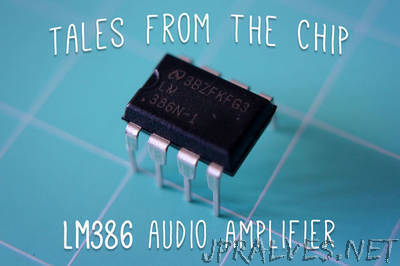
“Audio is one of the most entertaining, time-consuming and (eventually) wallet-draining ways of learning about and falling in love with electronics. Reproducing, recording and amplifying audio gets you up close and personal with the electrons rocketing through your circuits.
Which brings us to what is in my mind the best kickoff point in learning about audio electronics - amplification. If you have access to an old speaker and an audio source (such as your phone or MP3 player) you can easily start building low cost circuits that have immediate results - music blasting into the airwaves.
Chip AmpsIt used to be that audio amplification depended on large numbers of discrete components or power-hungry vacuum tubes to get decent sound from a source to a speaker. Like everywhere else, integrated circuits have made the barrier to entry much lower, letting us use any number of op-amps designed specifically for audio. These ICs are collectively called audio amplifier ICs, amplifier chips or chip amps. Typically they require few external components, can be prototyped with simple circuit designs and require less current than their discrete and tube counterparts.
Which brings us to the venerable LM386 by Texas Instruments. This bad boy has been with us since 1983, and can still be found in low power, battery driven applications all around the world. And being…
easy to power (using a single supply)low heat (no heatsink required)efficientavailable in the prototyping-friendly DIP package…means it’s much loved by the DIY audio community and a terrific place to start experimenting with chip amps. Also, you can pick one up for around $0.50 USD :) Here we’ll learn about the chip and build a simple circuit to put it to work. Let’s take a look.”
